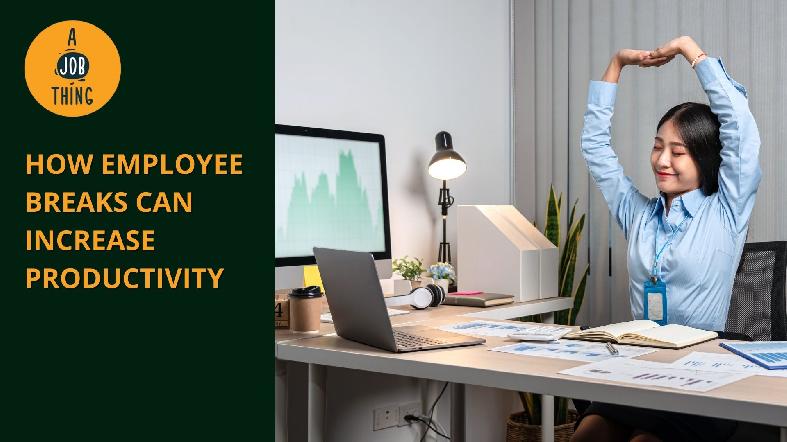
How Employee Breaks Can Increase Productivity
Are You Hiring?
Find candidates in 72 Hours with 5+ million talents in Maukerja Malaysia & Ricebowl using Instant Job Ads.
HIRE NOW
Encourage your staff to take breaks from their desks from time to time if you want to increase your company's productivity. According to both old and recent research, there's a positive correlation between employee productivity levels and the ability to take short breaks.
Here's what those studies have to say about staff breaks and what you can (and should) do about it.
2014 Staples research on employee breaks
Employee breaks have been the subject of intensive research at Staples, and the results are consistent and eye-opening.
According to a study conducted by Staples in 2014, over 85% of employees believed that taking regular breaks during the day can increase their productivity. More than a fifth of employees did not take a break other than lunch.
Based on the study, one in every five employees says they don't take breaks because of guilt, and 55% say they don't feel they can leave their workstation to take a break.
According to the study, breaks can also help with job burnout: 59% of those polled indicated more breaks would increase their work happiness, while 43% said it would improve their personal happiness. Furthermore, 37% said that taking regular breaks during the day would benefit their health.
The findings said that workplace break rooms may be the key to getting employees to take a break from their desks to recharge. A well-stocked and comfy break room would encourage breaks, according to over 60% of those polled, while 76% said break rooms would allow people to unwind and relieve stress.
Aside from break rooms, designating private meeting places and providing opportunities for mobility are two strategies to establish a productive workspace.
2019 Staples research on employee breaks
According to a 2019 version of the same Staples poll, 90% of employees would benefit from more flexible work arrangements. Part of the flexibility included more capacity for taking breaks.
Similarly, 67% of employees stated they would quit their jobs if their work schedules became more rigid. Aside from that, the survey focused on staff wellness, office design, and connectivity.
The key point is that employees want the freedom to take brief breaks on their own time.
2021 clinical study on employee breaks
According to a North Carolina State University research published in March 2021, employees, particularly those who are exhausted, benefit from "microbreaks". Employees who took five-minute breaks every now and then had more energy and were more likely to create and achieve work goals.
Other experts added that taking breaks can divert blood flow from overworked areas of the brain and rejuvenate cognitive functioning.
According to the study, employees in workplaces that prioritised employee health and wellness usually took more breaks. They were more likely to achieve their objectives when they had absolute autonomy to take a break on their own accord.
What other experts think about employee breaks
According to John Trougakos, associate professor of management at the University of Toronto Scarborough, job-related stress is a worrisome trend that affects workers and costs businesses hundreds of billions of ringgit each year.
Trougakos explained that regular work breaks could lower these costs while enhancing employee effectiveness and happiness, as well as reducing strain and fatigue. He added that disconnecting from work can positively impact people's energy and outlook.
Tom Heisroth, Staples Advantage's senior vice president of commercial and enterprise sales, said that it's critical that employees realise the importance of taking a quality break and that disconnecting can help them be happier, healthier, and more productive.
How do you encourage employees to take breaks?
Staples and Trougakos suggest the following ways to assist employers in encouraging breaks:
-
Healthy snacks and beverages should be provided. Employees want snacks, and most prefer healthy options such as nuts and granola bars instead of chips, cookies, and candies. Healthy diets can also boost productivity, so it's a win-win situation.
-
Think of comfort. The furniture influences the total comfort and appeal of the break room. Employers need to provide furniture that allows the employees to relax and mingle while enjoying their food and beverages.
-
When taking a break, disconnect. Employees, according to Trougakos, must mentally disconnect from their jobs to reclaim the energy needed to perform efficiently. Employees will not fully recharge or maximise the value of a break if they think about work.
-
Maintain a break-encouraging culture. This reduces employee guilt about taking important breaks and improves the effectiveness of breaks. In the end, this will boost employee happiness and productivity.
-
Encourage a positive attitude. Employees should do something during their breaks to create positive feelings because positive emotions are refreshing and can improve creativity and productivity.
Source: Business News Daily


